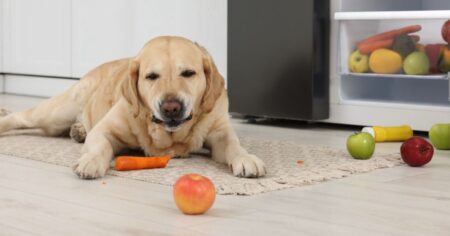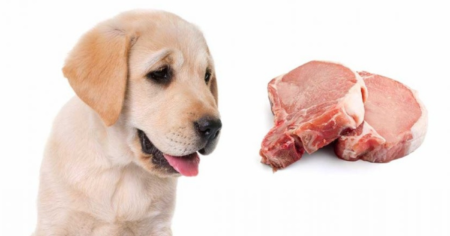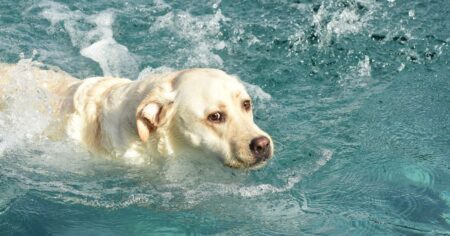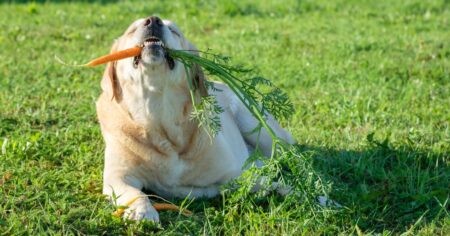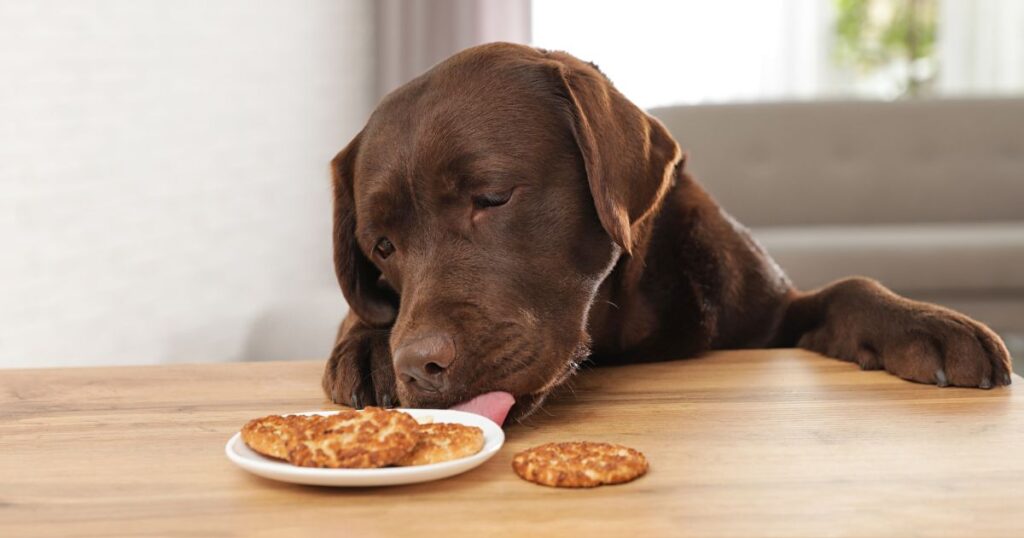
Feeding a Labrador puppy is a crucial aspect of raising a healthy and happy pet. As new pet owners, it is essential to understand the dietary needs of these energetic and lovable canines. Knowing how much, how often, and what to feed your puppy can make a significant difference in their long-term health and well-being.
Labrador puppies typically begin with kibble, which is ground meal shaped into dried biscuit-like pellets, as it is convenient and easy to store. The amount of food to feed your Lab varies depending on their age, size, and type of food provided. For instance, puppies under three months old should be fed three to four times daily, while those aged between three to six months require three to five feedings per day. As the puppy grows and reaches six months and older, feeding two times per day is recommended.
It is always essential to follow proper feeding fundamentals to maintain your Labrador puppy’s overall health. By considering their age, size, and nutritional needs, you can ensure that your furry friend thrives and enjoys a happy and fulfilling life.
Best Puppy Food for Labs
Ways of Feeding Your Labrador Puppy
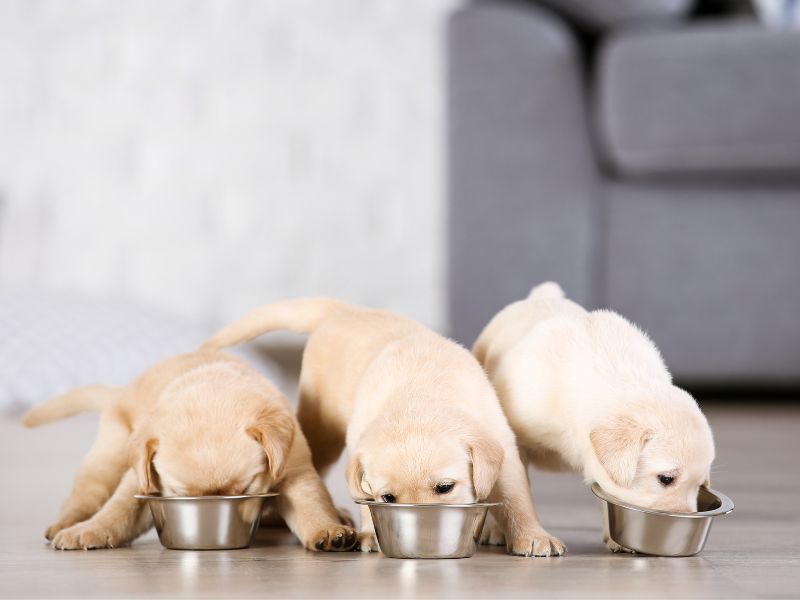
Feeding a Labrador puppy can be done through various methods like kibble, raw food (BARF), wet food, and home-cooked meals. Each method has its benefits and drawbacks, making it essential for Labrador puppy owners to choose the one that best suits their puppy’s needs.
- Kibble (dry food): Kibble is a popular choice among Labrador puppy owners, as it is convenient and contains a balanced combination of nutrients. It is made from ground meal and shaped into dry, biscuit-like pellets that are easy to buy, store, and feed.
- Barf (raw food): Some Labrador puppy owners opt for the Biologically Appropriate Raw Food (BARF) diet, which emphasizes feeding uncooked, raw ingredients. Advocates of this approach believe it is more natural and healthier for the puppy, while others argue it may expose the puppy to harmful bacteria.
- Wet food (cans and pouches): Wet food is another option for feeding a Labrador puppy. It typically contains higher moisture content, making it easier for the puppy to chew and digest. However, it can be messier and more expensive than dry food options.
- Home-cooked puppy food: For those who prefer preparing their Labrador puppy’s food, home-cooked meals can provide complete control over the ingredients, ensuring the puppy gets the best nutrients possible. However, this method requires extensive knowledge of canine nutrition and can be time-consuming.
Experts Disagree on Puppy Feeding
When it comes to feeding Labrador puppies, even the experts don’t always agree on what constitutes the best food. As a result, Labrador puppy owners must consider various factors, such as the puppy’s age, weight, and lifestyle, when selecting the best food option. It’s crucial to consult with a veterinarian for guidance on proper nutrition and feeding schedules.
Some of the best-recommended foods for Labrador puppies include:
- Nom Nom Fresh Pet Food
- Hill’s Science Diet Large Breed Puppy
- Purina ONE Natural High Protein +PLUS
- Ollie Fresh Pet Food
- Royal Canin Labrador Retriever Puppy Food
- Purina Pro Plan High Protein Chicken & Rice Formula
- Orijen Puppy Large
- Blue Buffalo Life Protection Formula Large Breed Puppy
In conclusion, feeding a Labrador puppy requires careful consideration and research to ensure they receive the necessary nutrients for their growth and development. With various feeding methods and a wide selection of recommended foods, Labrador puppy owners have many options to choose from to provide the best care for their furry companion.
Choosing the Best Puppy Feeding Method
When it comes to feeding your Labrador puppy, there are several methods to consider. Each method has its advantages and disadvantages, and choosing the right one depends on your preferences and your puppy’s needs.
Kibble (dry food): One popular feeding option is kibble, which is dry dog food. Kibble is easy to store, handle and measure. It can be an excellent option for those who are looking for a convenient and affordable puppy feeding choice. However, some puppies might not find kibble as appealing or palatable as wet or fresh food options.
Barf (raw food): Another method is the raw food diet, also known as the BARF (Biologically Appropriate Raw Food) diet. This diet involves feeding your puppy raw meat, bones and organs, aiming to replicate their natural diet in the wild. While this option can be beneficial for some puppies, it’s essential to ensure you provide all the necessary nutrients and exercise caution to prevent bacterial contamination.
Wet food (cans and pouches): Wet food, which comes in cans and pouches, can be more appealing to some puppies due to its texture and smell. These foods usually contain a higher moisture content and can be more expensive than kibble. Keep in mind that not all wet food brands have the same quality ingredients, so choose a high-quality option.
Home-cooked puppy food: Lastly, some pet owners choose to feed their puppies home-cooked meals. This method allows total control over the ingredients and portion sizes, ensuring that the puppy receives a balanced and nutritious diet. However, preparing home-cooked meals can be time-consuming and requires thorough research to provide all the essential nutrients your puppy needs.
Regardless of the chosen method, it’s crucial to feed your Labrador puppy the right amount for their weight and age. Make sure to consult your veterinarian, who can provide guidance on the appropriate feeding portions and frequency. Remember that a healthy and well-fed puppy will have the energy to grow and thrive, making it essential to choose the best feeding method that suits both you and your Labrador’s needs.
Feeding Your Labrador Puppy on Kibble
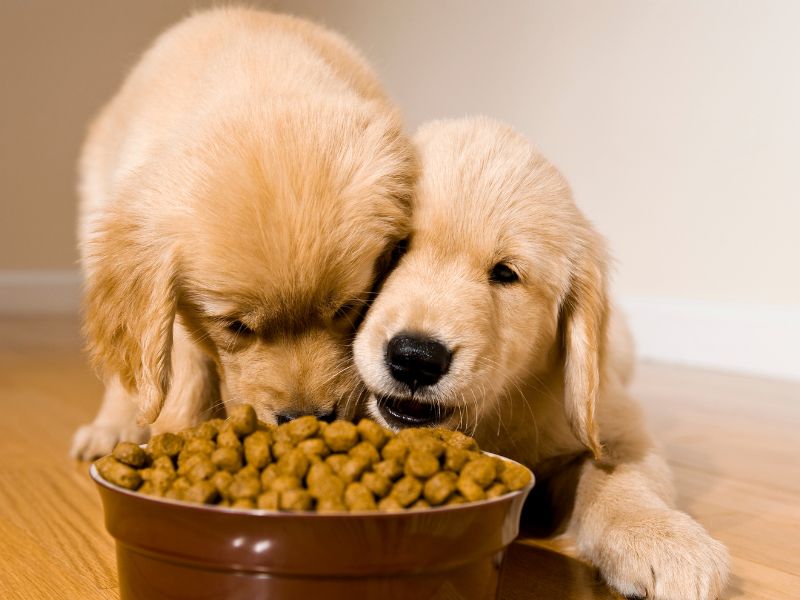
Kibble is a popular choice for many Labrador puppy owners, as it is convenient and provides a complete and balanced diet for growing puppies. It is made of ground-up food that is formed into pellets and dried for easy storage.
When selecting kibble for your Labrador puppy, make sure to choose a high-quality, age-appropriate formula that meets their nutritional requirements. In general, you can find various kibble brands that offer puppy-specific formulas that cater to the growing needs of young dogs.
The amount you feed your Labrador puppy will vary depending on their weight and the type of kibble you choose. Here is a general guideline based on your puppy’s weight:
- 40 – 45 pound Lab: 205 – 230 grams per day
- 50 – 55 pound Lab: 240 – 265 grams per day
- 60 – 65 pound Lab: 270 – 300 grams per day
It is essential to split these daily amounts into multiple meals throughout the day, as puppies have smaller stomachs and require more frequent feedings. Typically, you can start with three to four meals a day for your Labrador puppy.
Storing kibble properly is crucial to maintain its freshness and avoid dampness. Use an airtight, food-grade plastic container or tin to keep the kibble fresh and safe for your puppy to consume.
In summary, feeding your Labrador puppy on kibble can be a practical and nutritious choice. Ensure you select a high-quality, age-appropriate formula and provide the appropriate amounts based on their weight, adjusting as needed for their growth and development.
What Other Food Should You Feed With Puppy Kibble?
When it comes to feeding your Labrador puppy, kibble is a popular and convenient choice. However, providing a varied and balanced diet is essential for your puppy’s overall health and development. In this section, we will explore additional food options you can combine with puppy kibble to provide a well-rounded diet.
Speak to Your Vet
Before making any significant changes to your puppy’s diet, it’s important to consult with your veterinarian. They can provide personalized recommendations based on your puppy’s breed, age, weight, and specific dietary needs. Additionally, they can guide you on proper serving sizes and the best food choices to complement the kibble.
Incorporate Wet Food
Introducing wet food alongside kibble can provide your Labrador puppy with additional nutrients and hydration. Opt for high-quality wet food brands to ensure your puppy receives the essential nutrients necessary for growth and development. While wet food may be more appetizing for your puppy, it’s important not to overfeed them, as this may lead to obesity and other health issues.
Consider Raw or Home-Cooked Meals
Some Labrador owners choose to incorporate raw or home-cooked meals into their puppy’s diet. These options can provide a variety of nutrients, textures, and flavors. Raw food diets, also known as BARF (Biologically Appropriate Raw Food) diets, typically include raw meat, bones, fruits, and vegetables. Home-cooked meals, on the other hand, can offer more control over ingredients and cooking methods.
However, it’s crucial to consult with your veterinarian before choosing this option. It’s essential to ensure your puppy receives all the required nutrients for proper growth and development.
Supplements and Treats
While not a primary source of nutrition, supplements and treats can help support your Labrador puppy’s health and development. Some common supplements include:
- Omega-3 fatty acids to support skin, coat, and brain health
- Joint supplements for larger breeds like Labradors
- Probiotics to promote digestive health
Treats can be used for training and reinforcing good behavior. Choose healthy, low-calorie options to avoid overfeeding your puppy. Always consult with your veterinarian regarding any supplements or treats to ensure they meet your puppy’s specific needs.
What About Feeding Puppies on Raw Food?
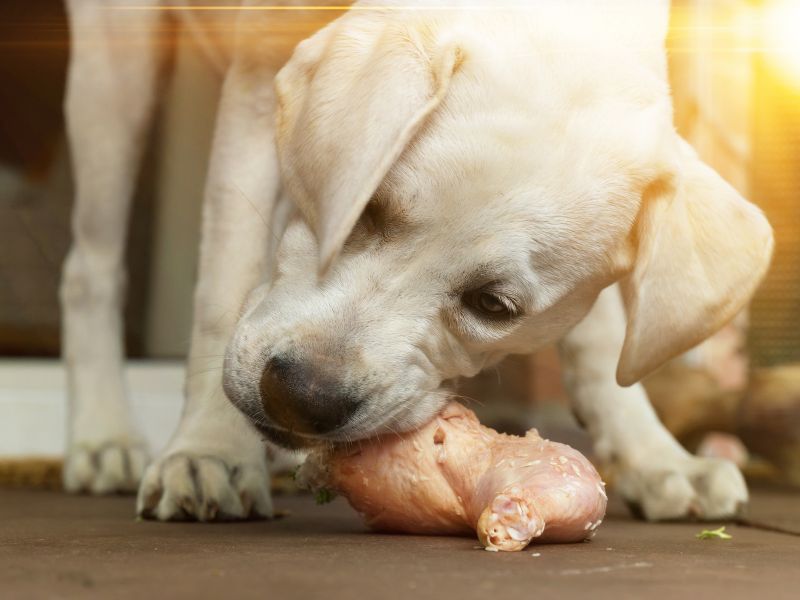
Feeding puppies on raw food, also known as the Biologically Appropriate Raw Food (BARF) diet, consists primarily of raw meat, edible bones, and animal organs. Some practitioners may also mix in small portions of fruit, vegetables, and other foodstuffs to fulfill a puppy’s nutritional requirements. In this section, we will discuss the importance of doing plenty of research before transitioning to a raw food diet and the potential benefits and drawbacks of this feeding method.
Do Plenty of Research
Before deciding to feed a Labrador puppy a raw food diet, it’s essential to do in-depth research and consult with a veterinarian or canine nutrition expert. Pet owners should understand the nutritional needs of their puppy to ensure that the raw food diet provides all the essential nutrients for growth and overall health.
When exploring raw food options, be aware of potential issues like bacterial contamination, choking hazards, and an unbalanced diet lacking appropriate nutrients. By taking time to research and plan, a pet owner can provide their puppy with a safe, healthy, and balanced diet.
Potential Benefits and Drawbacks
Many raw food proponents believe that feeding a Labrador puppy a raw diet can have several benefits, including:
- Healthier immune system
- Improved digestion leading to smaller poops
- Easier weight maintenance
However, there are also potential drawbacks to consider when committing to a raw food diet, such as:
- Risk of bacterial contamination and foodborne illnesses
- Potential choking hazards from whole bones
- Difficult to ensure a balanced diet, particularly for puppies with specific nutritional needs
- Time-consuming and costly compared to commercial puppy food
In conclusion, feeding a Labrador puppy a raw food diet requires careful research, planning, and consultation with professionals. Weighing the potential benefits and drawbacks is essential to determine if this feeding method is suitable for an individual puppy’s needs.
How Much to Feed a Labrador Puppy?
Feeding a Labrador puppy the right amount of food is crucial for their growth and overall well-being. Here’s a guide on how much to feed a Labrador puppy at different stages of their development.
For Puppies Under 3 Months Old
A Labrador puppy under 3 months old should be fed around 3-4 times daily. It’s necessary to provide a balanced mix of dry and wet food. Keep in mind that the exact amount of food will depend on the puppy’s individual needs and the brand of food being used.
For Puppies Between 3-6 Months Old
For Lab puppies between 3-6 months old, continue feeding them 3-5 times daily, providing a mix of dry and wet food. At this stage, their appetite and nutritional requirements may increase, so it’s crucial to monitor their growth and adjust the food intake accordingly.
For Puppies Over 6 Months Old
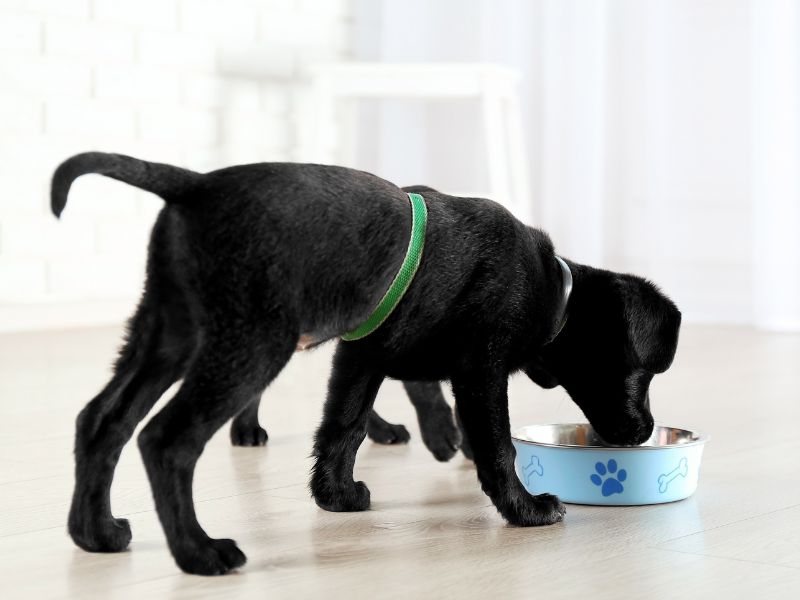
Once your Labrador puppy is more than 6 months old, you can reduce their feeding schedule to 2 times a day. At this stage, they would have transitioned to an adult diet, and it’s essential to ensure that their meals provide all the necessary nutrients they need for a healthy life.
Risks of Overfeeding Your Puppy
It’s essential to be cautious of overfeeding your Labrador puppy, as it can lead to various health problems. Some of the risks associated with overfeeding include:
- Obesity: Overfeeding can cause your puppy to gain excess weight, leading to obesity, which increases the risk of diabetes, heart disease, and joint problems.
- Rapid Growth: Feeding your puppy too much can result in rapid growth, which can put undue strain on their developing bones and joints. This can lead to a higher risk of skeletal issues and joint dysplasia.
To avoid overfeeding, it’s critical to follow the guidelines provided by the food manufacturer, and consult with your veterinarian to ensure that your Labrador puppy’s nutritional needs are being met appropriately. Be consistent in the feeding schedule and monitor your puppy’s weight and overall health for the best results.
Lab Puppy Feeding Chart
Feeding a Labrador puppy requires careful attention to their nutritional needs as they grow. A balanced diet with the right amount of food is essential for their physical and mental development. Keep in mind that the following feeding chart serves as a rough guide, and individual needs might vary depending on the puppy’s size, age, and activity level.
Feeding Frequency
- Under 3 months old: Labrador puppies should be fed 3-4 times daily.
- 3-6 months old: Feed them 3-5 times daily, using a mix of dry and wet food.
- Over 6 months old: Feeding your lab puppy 2 times each day is recommended.
Feeding Amounts
The amount of food your Lab puppy needs depends on its weight and the type of food you are providing. For reference, the Eukanuba Adult Breed Lamb and Rice food suggests these serving sizes:
- 40-45 pound Lab: Feed 205-230 grams per day
- 50-55 pound Lab: Feed 240-265 grams per day
- 60-65 pound Lab: Feed 270-300 grams per day
It’s crucial not to overfeed your Labrador puppy, as they may develop obesity and joint problems. Observe your puppy’s body condition and make adjustments to the feeding amount as needed. A 12-week-old puppy should have a visible waist and not appear overweight. If they seem heavy, consider reducing the amount of food slightly.
Don’t forget to consult your veterinarian for personalized feeding advice and monitor your Labrador puppy’s growth and development to ensure they are receiving the proper nutrition.
Choosing the Best Brand of Puppy Food
Feeding your Labrador puppy the right food is crucial for their growth, development, and overall well-being. In this section, we will discuss the factors to consider when choosing the best brand of puppy food for your Labrador, including the cost, quality, and availability.
The Cost of Puppy Food
When selecting the best brand of puppy food, it’s essential to consider the cost. The price can vary depending on the brand and the quality of ingredients. Remember that the cheapest option may not always be the best choice for your puppy’s health. It’s important to find a balance between affordability and quality to provide your Labrador puppy with the nutrition they need.
High-Quality Brands of Puppy Food
There are several high-quality brands of puppy food available in the market. Some top options, according to the search results, include:
- Royal Canin Breed Health Nutrition Labrador Retriever Puppy Food: This food is specifically formulated for Labrador puppies and is made with their overall health and wellness in mind.
- Wellness Complete Health Natural Dry Puppy Food: Made with chicken, salmon, and oatmeal, this is a well-balanced and nutritious option for Labrador puppies.
- Hill’s Science Diet Large Breed Puppy food: This veterinarian-recommended brand offers complete and balanced nutrition for large breed puppies like Labradors.
- Pedigree Complete Nutrition Puppy Dog Food: As a widely-known brand, Pedigree offers a quality option for Labrador puppies, ensuring they get a nutritious start to life.
Ensure you research each brand and read reviews to find the best option for your Labrador puppy.
Availability of Puppy Food
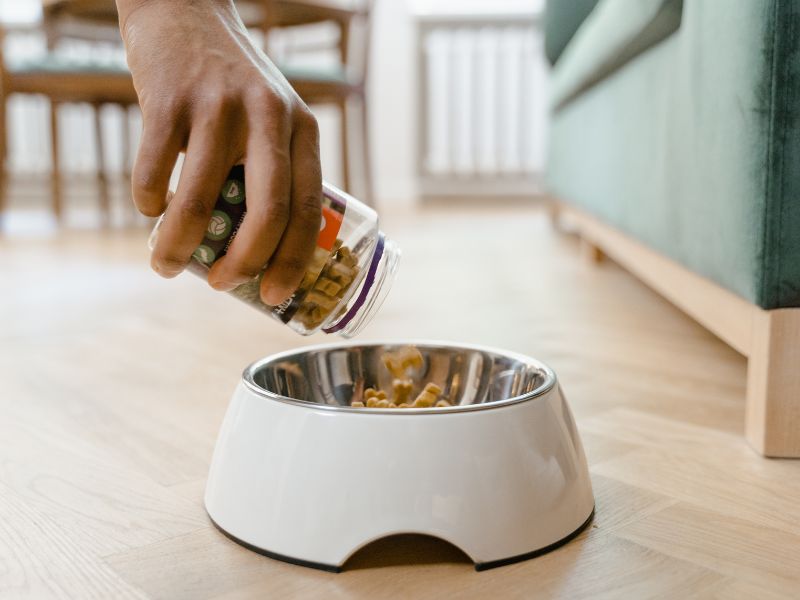
Another important aspect to consider when choosing a brand is the availability of the food. If a particular brand is difficult to find locally or online, it may not be the most convenient option for everyday feeding. Ensuring that your chosen brand of puppy food is easily accessible can help you maintain a consistent feeding schedule for your Labrador puppy, which is essential for their growth and development.
To sum up, when selecting the best brand of puppy food for your Labrador puppy, consider the cost, quality, and availability. By taking these factors into account, you’ll be well on your way to providing the best possible nutrition for your furry friend.
Following Puppy Feeding Quantity Guidelines
When it comes to feeding a Labrador puppy, it is important to pay attention to the recommended feeding guidelines. These guidelines can vary based on the puppy’s age, size, and the type of food being provided. Keep in mind that these guidelines are not always one-size-fits-all, so it is essential to monitor your puppy’s weight and body condition to ensure they are receiving the proper nutrition.
Labrador puppies under 3 months old should be fed an average of 3-4 times each day. When they reach the age of 3-6 months, it is suggested to feed them 3-5 times daily, incorporating both dry and wet food. For puppies more than 6 months old, feeding them 2 times each day is typically recommended.
It is important to follow the feeding instructions printed on the label of your chosen puppy food. These instructions will provide meal size recommendations based on your puppy’s age and weight. For example, the Eukanuba Adult Breed Lamb and Rice food suggests the following serving sizes:
- 40 – 45 pound Lab: 205 – 230 grams per day
- 50 – 55 pound Lab: 240 – 265 grams per day
- 60 – 65 pound Lab: 270 – 300 grams per day
Remember to carefully monitor your puppy’s body condition. By the time your puppy is 12 weeks old, they should have a noticeable waist, indicating that they are at a healthy weight. If your puppy appears overweight, it may be necessary to cut down slightly on the amount of food they are given.
In summary, following the recommended puppy feeding guidelines and adjusting them based on your Labrador puppy’s individual needs is essential for proper growth and development. Monitoring your puppy’s weight and body condition while providing the correct type and quantity of food will help ensure a healthy and happy life for your beloved pet.
Where to Feed Your Puppy
When it comes to feeding your Labrador puppy, choosing the right location is just as important as selecting the appropriate type and amount of food. In this section, we will discuss some factors to consider when deciding where to feed your puppy.
Food Guarding
Food guarding is a common canine behavior that can be addressed during your puppy’s early development. It’s essential to create a calm and predictable feeding environment to help reduce food guarding tendencies. Feeding your pup in a designated area, away from other pets or distractions, will establish consistency and soothe their feeding anxiety.
Crate Feeding
Crate feeding is an effective way to provide a structured and secure mealtime for your Labrador puppy. By feeding your pup inside their crate, you’ll create a positive association and help reinforce crate training. Be sure to keep their feeding area clean and free of any toys or bedding, as this will help maintain proper hygiene and prevent health issues.
Choosing the Right Food (And Water) Bowls
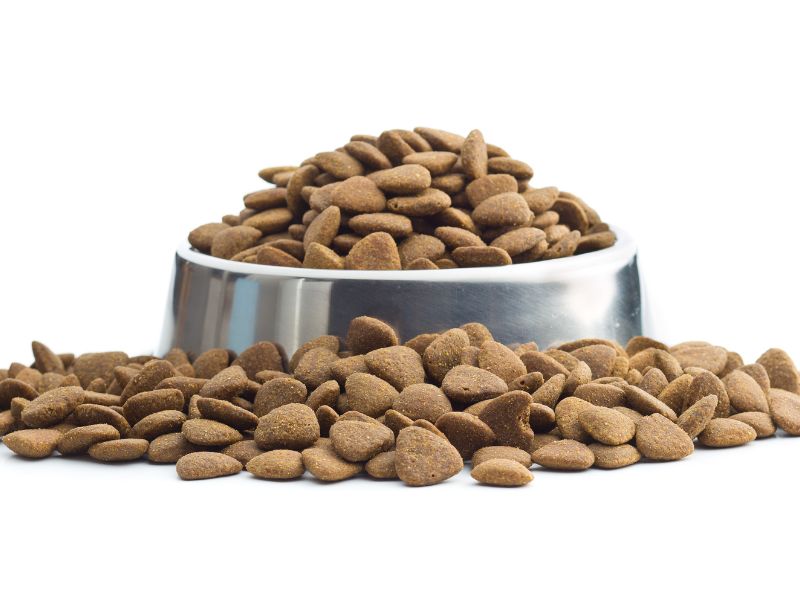
Selecting appropriate food and water bowls for your Labrador puppy plays a vital role in their overall mealtime experience. Consider the following factors when choosing your puppy’s bowls:
- Material: Stainless steel bowls are a popular choice due to their durability and ease of cleaning. Avoid plastic bowls, as they can harbor bacteria and cause allergies or chewing tendencies.
- Size anddepth: As your Lab grows, you’ll need to increase the size of their bowls. Choose a bowl deep enough for your puppy to comfortably eat without tipping it over but shallow enough to prevent strain on their neck.
- Non-slip base: To minimize spillage and movement, opt for bowls with a rubber or silicone base, which provides stability during mealtime.
Remember, establishing a comfortable and consistent feeding environment is essential for your Labrador puppy. By considering food guarding, crate feeding, and choosing the right food and water bowls, you’ll create a positive mealtime experience for both you and your pup.
Get Pippa’s Training Tips!
Pippa Mattinson, a best-selling author and Labrador specialist, offers valuable training tips and guidance for those looking to properly feed and train their Labradors. Her knowledge comes from over 40 years of experience with dogs, so newcomers can trust her expertise.
Her tips cover a broad range of topics, including puppy care, diet and food choices, and training techniques. New Labrador owners can find these tips especially helpful for establishing a successful regime.
- Potty Training: Learn how to potty train your Labrador puppy with Pippa’s techniques and patience.
- Crate Training: Get advice on making crate training a comfortable and positive experience for your dog.
- Teaching Basic Commands: Pippa provides step-by-step instructions on how to train your Labrador to sit, stay, and come when called.
Moreover, Pippa offers useful information about kibble, a popular choice for Labrador puppy food. She advises storing kibble in a food-grade airtight container to maintain its freshness and quality.
For those wanting to receive regular updates, Pippa sends out free training tips via email. These insightful tips are filled with actionable steps that can be implemented immediately. Labrador owners can join her 80,000 readers to stay connected and informed.
In summary, Pippa Mattinson provides invaluable guidance to Labrador owners. From diet charts to training exercises, her expertise helps build a strong foundation for a happy and well-trained dog.
Keeping Your Puppy at the Right Weight
Maintaining a healthy weight for your Labrador puppy is essential for their overall health and well-being. In this section, we’ll discuss how to keep your puppy at the right weight and what to do if your puppy is too thin.
What If Your Puppy Is Too Thin?
If you notice that your Labrador puppy appears to be too thin or underweight, it may be necessary to adjust their diet and feeding habits. Here are a few steps to help your puppy regain an ideal weight:
- Monitor their food intake: Keep track of how much food your puppy is consuming each day. A Labrador puppy should typically eat around 200-250 grams of food per day, divided into four meals. As they grow, the feeding frequency can be reduced to twice a day.
- Choose high-quality food: Ensure that you provide your Labrador puppy with high-quality food formulated specifically for puppies. This will ensure they receive the essential nutrients they need for optimal growth and health.
- Gradually increase food portions: If your puppy is underweight, gradually increase their portion sizes so that they consume more calories. Be careful not to overfeed them; the goal is to help them reach a healthy weight, not become overweight.
- Feed at consistent times: Establish a consistent feeding schedule for your Labrador puppy. Consistency can help increase their appetite and improve their nutritional intake.
- Consult a veterinarian: If your puppy’s weight remains concerning, consult your veterinarian for professional advice and guidance. They can help identify any underlying health issues and develop a tailored feeding plan for your Labrador puppy.
In summary, maintaining a healthy weight for your Labrador puppy is essential to their overall well-being. Monitor your puppy’s weight and adjust their diet appropriately if they seem too thin. Remember: always consult a veterinarian if you have any concerns about your puppy’s health.
How Often Should You Feed Your Labrador Puppy?
General Guidelines
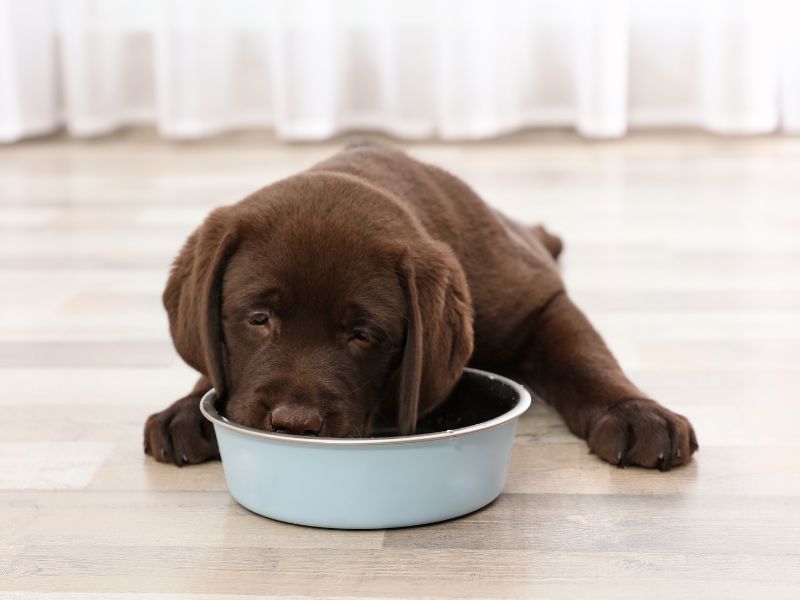
Feeding your Labrador puppy the right amount and on a consistent schedule is essential for their health and development. The frequency at which you feed your puppy depends on their age and individual needs. Here is a general guideline for feeding a Labrador puppy based on their age:
- Under 3 months old: A Labrador puppy in this age range should be fed 3 to 4 times a day. Providing frequent, small meals helps them develop healthy eating habits and prevents overeating.
- 3 to 6 months old: During this phase, you can gradually reduce the number of feedings to 3 times a day (or maintain 4 times a day, if recommended by your vet). You can also introduce a mix of dry and wet food to their diet.
- Over 6 months old: Once your Labrador puppy is more than 6 months old, feeding them 2 times a day is recommended. This can help establish a routine for their adult life.
Remember that these are general guidelines, and it’s crucial to monitor your puppy’s growth and development. If you are ever uncertain about the right feeding schedule for your Labrador puppy, consult with your veterinarian for personalized guidance. They will consider factors like your puppy’s size, weight, and activity level to provide you with the most accurate advice.
Keep in mind that different brands of puppy food may have different feeding recommendations. Always check the feeding instructions on the packaging or consult the manufacturer’s website for specific guidance.
Feeding your Labrador puppy a balanced diet and on a consistent schedule is essential for their overall health and wellbeing. Follow these general guidelines, and don’t hesitate to reach out to a veterinary professional for personalized advice.
Mealtimes and Schedules: Or When to Feed Your Puppy
First Meal of the Day
It’s essential to establish a routine when it comes to feeding your Labrador puppy. Begin by offering the first meal of the day as soon as your puppy wakes up. This will help align the timing of your puppy’s meals with its natural digestive rhythm and provide the necessary energy for a day full of excitement and play.
Last Meal Before Bed
The last meal should ideally be given about 2-3 hours before bedtime. This allows enough time for digestion and can prevent gastrointestinal discomfort that might disturb your puppy’s sleep. Feeding too close to bedtime can also lead to accidents during the night.
Example Puppy Feeding Schedule
Here’s an example feeding schedule for a Labrador puppy:
- 6-12 weeks old: 4 meals per day
- 3-6 months old: 3 meals per day
- 6 months and older: 2 meals per day
A typical daily feeding schedule might look like this:
| Time | Meal |
|---|---|
| 7:00 AM | Breakfast |
| 12:00 PM | Lunch |
| 5:00 PM | Dinner |
| 8:00 PM | Final meal (Optional, depending on age) |
Remember to adjust the portion sizes, type of food (dry or wet), and mealtimes according to your puppy’s age, activity levels, and specific nutritional requirements.
12 Weeks Old
For a 12-week old Labrador puppy, it is recommended to feed about 1 cup of food per day, divided equally into 3-4 meals. This will ensure that your young puppy receives the necessary nutrients for optimal growth while learning the feeding routine. Gradually increase the food amount and transition to fewer meals per day as your puppy grows older, eventually reaching 2 meals per day.
Make sure to provide fresh water during meals and monitor your puppy’s weight and growth to ensure their nutritional needs are being met. Don’t forget to consult your veterinarian for advice and guidance on feeding your specific puppy.
What If My Puppy Is Still Hungry?

Sometimes, Labrador puppies might seem extra hungry even after they have had their meal. This can be a cause for concern for pet owners. In this section, we will explore some reasons behind this, as well as ways to address the issue.
Split Meals into Smaller Portions
One way to help your puppy feel more satisfied is to split up their daily food allowance into smaller portions. This not only ensures that your puppy is receiving the appropriate amount of calories but also helps to spread out their meals throughout the day, preventing them from becoming overly hungry between feedings. For example, the Eukanuba Adult Breed Lamb and Rice dog food suggests the following feeding schedule:
- 40 – 45 pound Lab: 205 – 230 grams per day
- 50 – 55 pound Lab: 240 – 265 grams per day
- 60 – 65 pound Lab: 270 – 300 grams per day
Depending on your dog’s size, you may want to divide the daily amount into three or four smaller meals instead of one, like:
- Morning
- Late afternoon
- Right before bedtime
Slow Feed Dog Bowls
In some cases, puppies might eat too quickly, leading them to think that they are still hungry even after consuming their meal. Slow feed dog bowls can be helpful in this situation, as they are designed to reduce the speed at which a dog consumes their food. These bowls often have ridges or obstacles that force your dog to eat more slowly, which can provide your pet with a greater feeling of fullness after a meal.
Benefits of Slow Feed Dog Bowls:
- Reduce the risk of overeating
- Encourage slower, healthier eating habits
- Can help prevent digestive issues, such as bloating or indigestion
It’s essential to monitor your puppy’s growth and appetite as they develop, and consult your veterinarian if you notice any significant changes. Keep in mind that a Labrador puppy should be transitioned from wet food to kibble around 10 weeks of age for proper growth and nutrition. By following the advice of your veterinarian and using these strategies, you can help to ensure that your Labrador puppy maintains a healthy appetite and receives the proper nutrition they need.
What If My Puppy Won’t Eat?
There could be several reasons why a Labrador puppy may not be eating. Stress, changes in environment, or illness could be possible factors. Before trying any solutions, it’s essential to consult a veterinarian, especially if your puppy shows signs of illness or discomfort.
One way to encourage your puppy to eat is by warming up their food in the microwave for 10 seconds or so. This can help unlock the food’s aroma, making it more appealing to the pup. Make sure the food is not too hot before giving it to your puppy, as this can lead to burns.
Another tip is to add some warm water to dry kibble, using a ratio of about 1 part water to 3 parts dry food. You can even warm it in the microwave for 30 to 60 seconds to enhance the smell. This gives the kibble a softer texture, making it easier for your puppy to chew and digest.
Moreover, you can spike your puppy’s regular food with yogurt or cottage cheese, or offer a small amount of a stinky canned product with high meat or fat content. Pouring chicken broth, beef broth, clam juice, or tuna water over the dry food can also make it more appealing.
If you’re feeding your puppy with kibble, make sure to store it in an airtight plastic container or tin that is food-grade quality. This will prevent the food from becoming damp and help maintain freshness.
In summary, it’s essential to consult your veterinarian if your Labrador puppy won’t eat. Warming up their food, adding tasty toppers, and storing dry food properly can all help ensure that your puppy gets the nutrition they need.
Should Your Puppy Have Milk?
When it comes to feeding a Labrador puppy, many owners wonder if giving milk is an acceptable option. In small amounts, milk can be safe for puppies, but it should not be considered a primary food source.
One reason to be cautious about including milk in a Labrador puppy’s diet is its natural sugar content. These sugars may be too high for a young pup to digest easily, leading to potential gastrointestinal issues.
On the other hand, some dogs do enjoy dairy products, and can occasionally drink milk without any adverse consequences. It is important, however, to always exercise moderation when introducing new foods to a puppy’s diet.
It’s worth noting that experts have differing opinions on the best food options for puppies. Some popular alternatives include:
- Kibble (dry food)
- Barf (raw food)
- Wet food (cans and pouches)
- Home cooked puppy food
Each of these options has its pros and cons, but all can provide the essential nutrients a growing Labrador puppy needs. Instead of relying on milk, it’s best to stick to one of these recommended feeding options for your Labrador pup.
Changing from Puppy to Adult Food
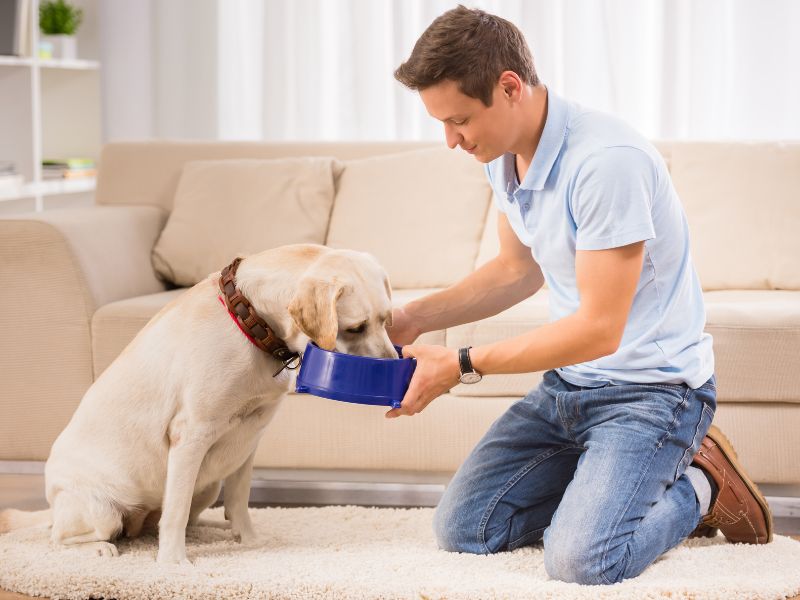
As Labrador puppies grow, their nutritional needs change, and it’s essential to transition them from puppy to adult food at the right time. Typically, this switch occurs when they reach around 80% of their expected adult size. For most Labradors, this occurs between 9 to 12 months of age.
Puppies require more protein and calories than adult dogs to support their rapid growth and development. Puppy food is specially designed with higher protein and calorie content. On the other hand, adult food has a lower calorie content to accommodate a more sedentary lifestyle and prevent weight gain.
When it’s time to transition your Labrador puppy to adult food, it’s best to do it gradually to prevent upset stomachs and ensure they adjust to the new diet properly. Here’s a sample transitional feeding plan:
- Days 1 to 2: Feed 3/4 of the normal amount of puppy food and add 1/4 adult dog food.
- Days 3 to 4: Serve half puppy food and half adult dog food.
- Days 5 to 7: Feed 1/4 puppy food and 3/4 adult dog food.
- Days 8 to 10: Serve only adult dog food.
If your puppy develops vomiting, diarrhea, or lack of appetite during the transition, stop feeding the adult dog food and consult your veterinarian. It’s essential to monitor your dog’s health and weight during this time to ensure they are adjusting well to the dietary change.
Additionally, watch for signs that your puppy may be growing too quickly, as transitioning to adult food too soon can promote rapid growth, potentially causing joint and bone health issues. If you have concerns about when to switch your Labrador puppy to adult food, consult with your veterinarian for personalized recommendations.
Switching Between Dog Food Brands
Switching between dog food brands can be important for various reasons like different nutritional requirements, allergies, or simply a change in preference of your Labrador puppy. However, it should be done with care to avoid any gastrointestinal upset.
It is always best to gradually transition your Labrador puppy to a new dog food over the course of a week or two. This can help reduce the risk of food refusal, diarrhea, vomiting, and gassiness. Here’s a simple guideline to follow for a smooth transition:
- Day 1: 10% new food mixed with 90% old food
- Day 2: 20% new food mixed with 80% old food
- Day 3: 30% new food mixed with 70% old food
- Day 4: 40% new food mixed with 60% old food
- Day 5: 50% new food mixed with 50% old food
- Day 6: 60% new food mixed with 40% old food
- Day 7: 70% new food mixed with 30% old food
- Day 8: 80% new food mixed with 20% old food
- Day 9: 90% new food mixed with 10% old food
- Day 10: 100% new food
Remember, the individual needs of your Labrador puppy can vary, so adjust the transition period as needed to maintain an ideal body condition. Keep a close eye on your puppy during this time and consult with your veterinarian if you have any concerns or questions about the new food.
Different dog food brands offer various types of diets, such as kibble (dry food), wet food (cans and pouches), raw food (BARF), and home-cooked puppy food. It’s essential to consider your Labrador puppy’s needs and consult your veterinarian before making any significant changes to their diet.
Adding Variety to Your Puppy’s Diet
Introducing a variety of foods into your Labrador puppy’s diet can make mealtime more enjoyable and ensure they receive essential nutrients. This section will discuss hand-feeding, using treats during training, and other methods to add variety to your puppy’s diet.
Hand Feeding
Hand feeding your Labrador puppy can help strengthen your bond and develop positive associations with mealtime. Start by offering small amounts of kibble or wet food from your hand during specific mealtimes. Gradually increase the portion size as your puppy grows accustomed to hand-feeding. This method can also help with puppy’s food-related anxiety, digestion, and managing their eating speed.
Training and Treats
Incorporating treats into your Labrador puppy’s training routine can be an effective way to reinforce positive behavior. When selecting treats, opt for healthy and nutritious options such as:
- Lean, cooked meat (e.g., chicken, turkey)
- Fresh, bite-sized fruits or vegetables (e.g., apples or carrots, avoiding grapes or raisins)
- Dog-safe peanut butter (without xylitol, a harmful sweetener for dogs)
- Low-fat cheese or plain yogurt
Remember that treats should be limited to only a small percentage of your puppy’s daily calorie intake. Consistently using treats during training sessions can keep your growing Labrador engaged, well-socialized, and mentally stimulated while offering a diverse range of flavors and textures in their diet.
By incorporating hand feeding and nutritious treats into training sessions, you can add variety to your Labrador puppy’s diet, promoting a healthy appetite, balanced nutrition, and fostering a strong bond between you and your furry friend.

